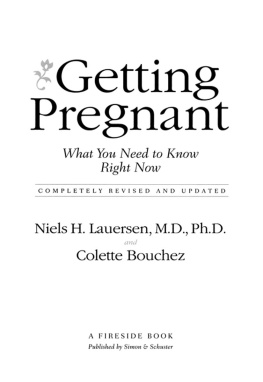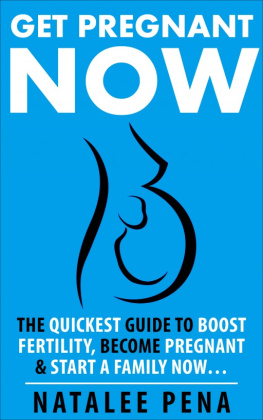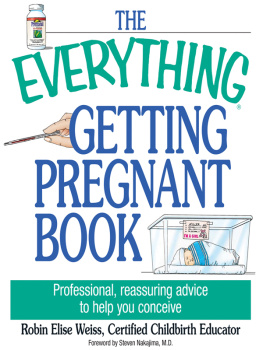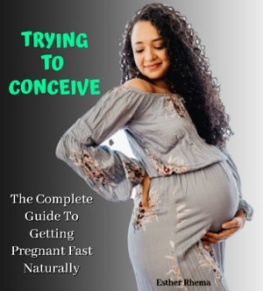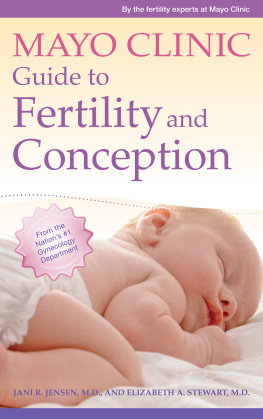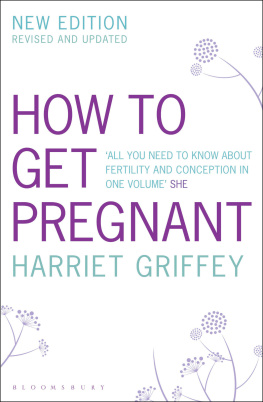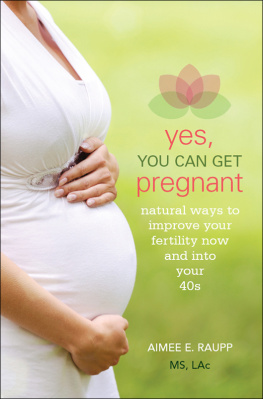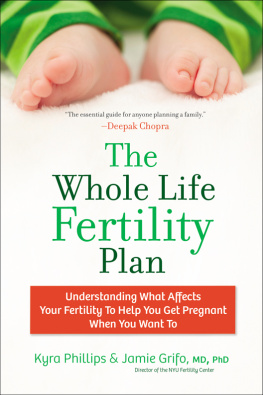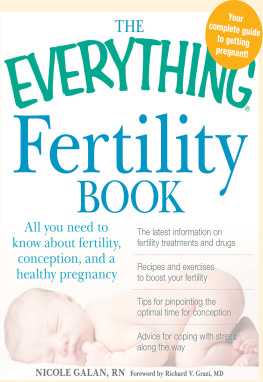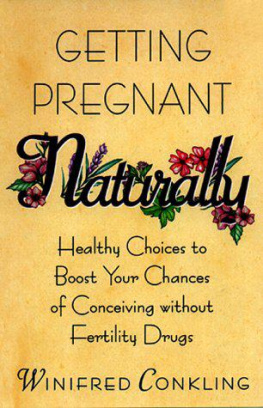Acknowledgments
Through the course of writing this book, many friends, colleagues, and patients have blessed us with their support, enthusiasm, insights, and knowledge. We thank each of them for every contribution, and for caring about this book.
In particular we would like to thank all the experts in the field of reproductive medicine who, through their own achievements and research, helped us to expand the boundaries of the treatment of infertility, particularly Jacques Cohen, Ph.D., Jamie Griffo, M.D., Richard Marrs, M.D., Giancarlo Palermo, M.D., J. Victor Reyniak, M.D., Zev Rosenwaks, M.D., Mark Sauer, M.D., and Richard Scott, M.D.
Special acknowledgments go to the entire Obstetrics and Gynecology Department of St. Vincents Medical Center, particularly John Koulos, M.D., and Daniel Clements, M.D., as well as to Hugh K. Barber, M.D., former director of Obstetrics and Gynecology at Lenox Hill Hospital, for helping to establish new and higher standards of health care for women.
Our gratitude also goes to the American Society of Reproductive Medicine, to Resolve, and to the American Fertility Association, and particularly to Pamela Madsen for her support and her continued efforts to help infertile women. Wed also like to thank the March of Dimes Foundation and Nine To FiveThe National Organization of Working Women, who shared their research and their insights.
Our heartfelt thanks go to the entire staff of the New York Medical Center for Reproductive Medicine for their insights and contributions, particularly Joan Affigne, Dr. Magda Binion, Donna Brummett, Rochelle Goldman, Lisa Gonzales, Anita Gutierrez, Lee Martin, Maria Perez, and Zena Rubinov.
To our friend, confidante, and colleague Yanni Antanopoulos, thank you in more ways than we can ever say. A special acknowledgment also goes to embryologists Carlos Acosta, Ph.D., and Tania Combiano, Ph.D., who shared their knowledge and their time so generously.
Many thanks to Adrian Rothenberg for her photographic contributions as well as to Ronnie Verebay, Janet Choi, and Karolina Koerna for their administrative assistance. And to Mary B. and St. Jude for always being there to pull us throughthank you.
A debt of gratitude we can never repay goes to our brilliant business and legal advisors Albert Terranova and Randy Maestro, who helped this book become a reality.
Our deepest appreciation goes to the editor and publisher of the original 1991 edition of this book, Eleanor Rawson, whose insights, wisdom, encouragement, and support remain with us always. Thank you for being there in the beginningand in the end.
Our thanks also extends to Ballantine Books and editors Joelle DelBourgo and Judith Curr, for supporting the paperback edition of our original book.
Finally, our profound thanks goes to Simon & Schuster editor Betsy Radin Herman, who brought this book to its current updated status, and whose gentle heart and firm hand guided it to completion. She is truly an editor from heaven and we cherish her friendship and support. A special thank you also goes to assistant editor Matt Walker, who kept the wheels turning and never failed to make us smile.
And to Fireside Publisher Mark Gompertz and Editor-in-Chief Trish Todd, we are grateful that you have stayed with us to the end; we treasure your support.
Niels H. Lauersen, M.D., Ph.D., and Colette Bouchez
Introduction
The Really Good News About Getting Pregnant
When I was in medical school in the 1960s, the birth control pill was the prescription of the decade. Indeed, young men and women were far more concerned with avoiding pregnancy than with getting pregnant. Happily, this is no longer the case. Today, getting pregnant is something more and more couples view as a joyous life-expanding experience to be celebrated and cherished. And, too, we have seen the birth of the single mother, with many women choosing to honor the alarm on their biological clock by becoming mothers whether or not they have a suitable mate in mind.
Fortunately, along with these changes in our attitude about pregnancy came some equally important scientific advances that made it faster and easier for all women to get pregnant, and for most couples to achieve their parenting goals.
New information about both male and female biology has given us ways to encourage not only faster but healthier conceptions, with fewer chances for miscarriage and birth defects.
Discoveries concerning the cause of infertility have given us new ways for men and women to protect their childbearing ability as well as their sexual vitality while they safely postpone childbearing.
Outstanding advances in nutritional therapy have given us new ways to harness the power of vitamins and minerals and in the process helped us not only reduce the risk of birth defects but also protect and even increase fertility, in both men and women.
Stellar progress made in the treatment of infertility itselfincluding powerful new medications, new forms of microsurgery, and brand-new laboratory-assisted procedureshas not only allowed more previously infertile couples to get pregnant, but has given us new ways that even parents over age thirty-five can have a safer, healthier pregnancy.
In fact, thanks to what we have learned in the past several years alone, almost every woman who wants to have a baby can have one!
Why I Wrote This Book
Although the field of reproductive medicine continues to explode with new advances, my deep commitment to fertility research goes back several decades. As a member of several key scientific teams I have devoted thousands of hours to reproductive research, and my work has taken me around the world more than three times, to the capitals of Europe where the first test tube baby was conceived, to Russia, South America, and the Far Eastanywhere I could learn the latest information on the reproductive system. Beginning in 1990, I joined forces with a team of dedicated physicians and researchers to create a medical center specifically to deal with infertility problems. As a result I have been able to see, firsthand, the exciting, almost miraculous ways in which the field of reproductive medicine has continued to grow, and how it can and does change peoples lives.
Couples who were thought to be hopelessly infertile are now able to conceive and deliver not just one, but two and three perfect children.
Those who previously miscarried up to fifteen times are now giving birth to healthy, full-term babies.
Women who thought they were too old to have a baby are now giving birth to wonderful, beautiful children. Even those women who reach menopause prematurelyin their mid-forties, for examplehave brand-new options for having a baby of their own.
Time and again my colleagues and I have witnessed a dramatic rise in the number of our fertility patients who are able to have all-natural conceptions and healthy pregnancies just by making a few simple dietary and lifestyle changes.
As astounding and important as these advances were, as I traveled the country giving lectures and making television appearances, I began to see that too many couples were still not taking advantage of all the possibilities. My colleague and coauthor Colette Bouchez, an award-winning and respected medical journalist and researcher, began to see the same thing, even among her sophisticated urban readers. While we both did our best to bring much of the good news about reproductive medicine to the public, we could see that too often, too many couples were still in the dark about all of their options. While some, certainly, had the basic information about such procedures as in vitro fertilization and artificial insemination, both Colette and I were continually amazed at how few people were informed about the really dramatic advances. Indeed, even many physicians were not aware of some of the great and relatively easy new fertility procedures that we knew could change peoples lives.

